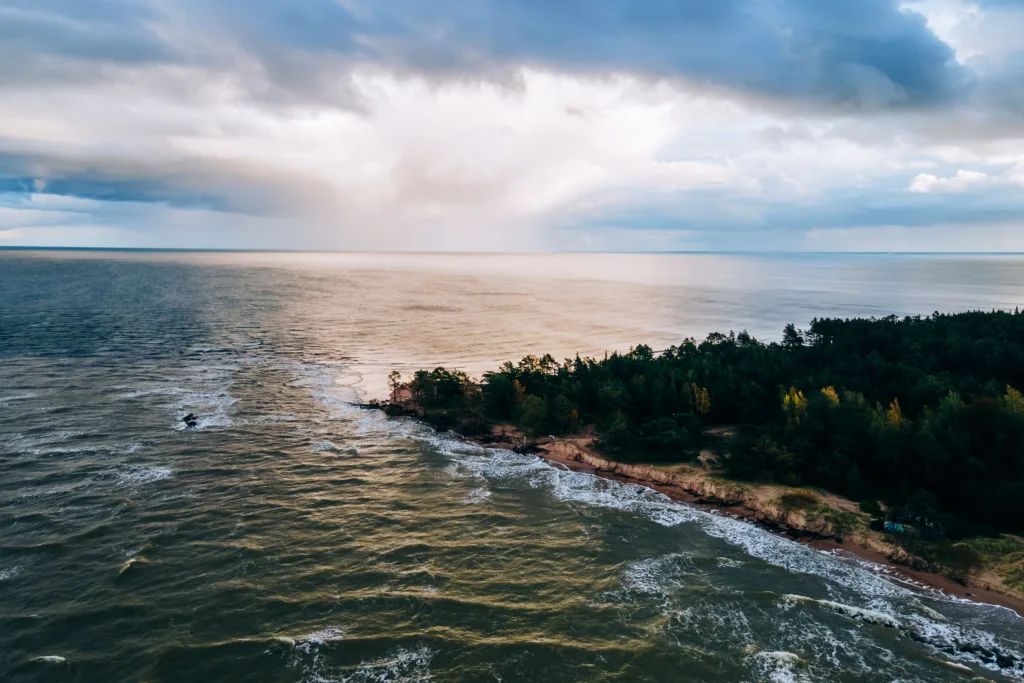
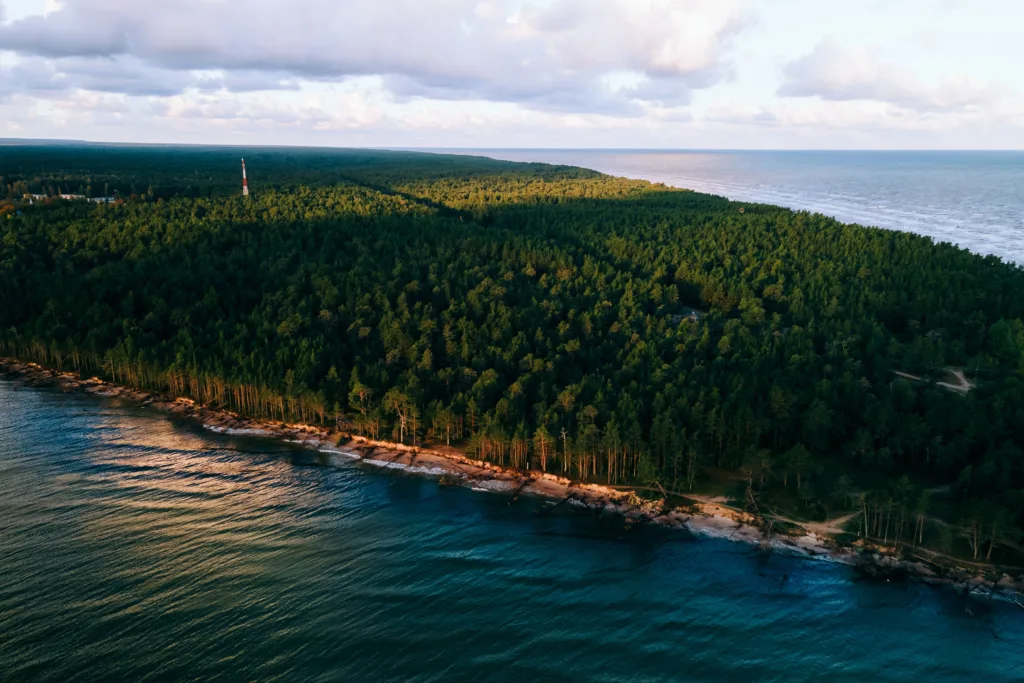
Nestled at the northern tip of the Courland Peninsula in Latvia, Cape Kolka is a place where history, culture, and nature converge in a captivating narrative. Standing on this windswept headland, it’s fascinating to imagine the settlements that once dotted this landscape, hinting at a rich tapestry of human history.
Table of Contents
Overview of Cape Kolka
The treacherous currents and shifting sandbanks around Cape Kolka have long made these waters a challenging terrain for sailors. Ships, over the centuries, faced the fate of shipwrecks in this unpredictable maritime zone. To address this, a lighthouse was erected in 1884, its light piercing through the darkness to guide seafarers safely through the Baltic Sea and the Gulf of Riga.
Cape Kolka’s cultural significance deepens when we consider the indigenous Livonian people who once called this region home. Despite facing challenges to their culture and language over time, the Livonian spirit perseveres, and efforts have been made to preserve and revitalize their unique heritage.
The echoes of history reverberate through the cape’s soil, steeped with culture and traditions that survived the most turbulent times.
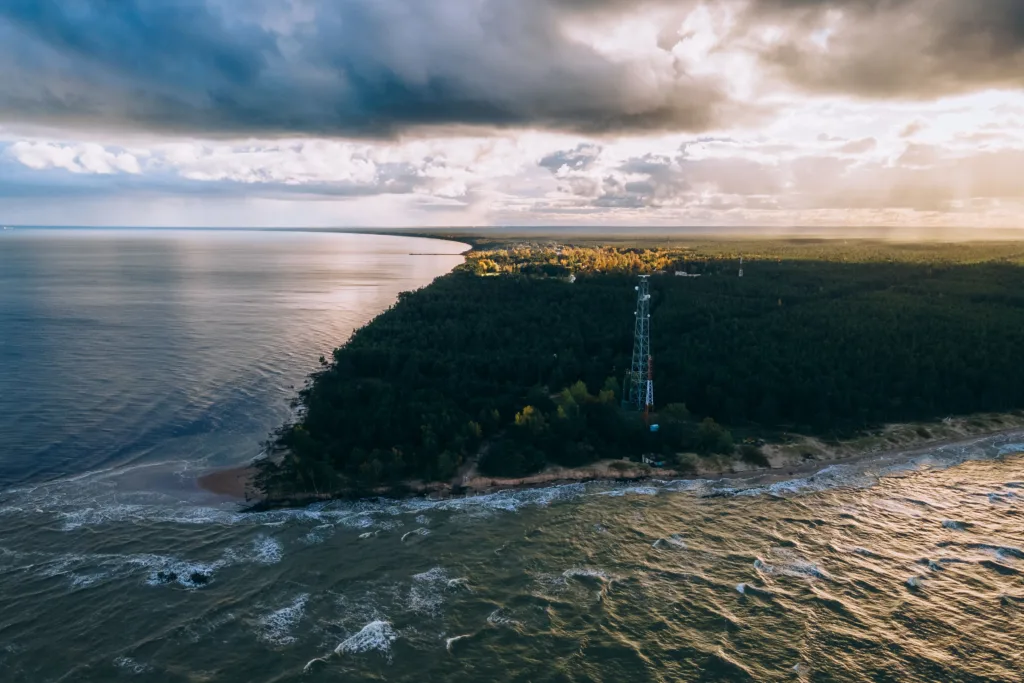
World War I saw German occupation in this area, and after the conflict and the War of Independence, Latvia emerged as a sovereign nation. However, the shadows of war returned during World War II when the Soviet Union occupied Latvia, leaving an imprint on the region’s history.
The post-Soviet era brought a renewed sense of independence to Latvia in 1991. Cape Kolka, off limits during the Soviet control, became an integral part of the sovereign nation.
Over the years, the cape has transformed into a tourist destination, attracting visitors with its natural beauty, historical sites, and cultural heritage. As you wander along the cliffs and sandy beaches, it’s not just a scenic landscape but a living testament to Latvia’s journey through the pages of time.
Today, Cape Kolka isn’t just a historical site; it’s a thriving ecosystem, drawing birdwatchers eager to witness migratory patterns and environmental enthusiasts keen on preserving the delicate balance between tourism and conservation.
The coast going west from Cape Kolka is the historical Livonian coast, home to the Livs, an indigenous Finno-Ugric people that have inhabited these territories for thousands of years.
The Līvõd pivād (Livonian Festival), an annual celebration, brings the cultural heritage of the Livonian people to life with music, dance, crafts, and storytelling.
In the whispers of the wind and the rhythmic waves crashing against the cliffs, Cape Kolka narrates a story that goes beyond its physical beauty. It is a tale of resilience, cultural richness, and the ever-evolving dance between humanity and nature, making it a captivating destination for those who seek to immerse themselves in Latvia’s layered past and present.
Cape Kolka and the Livonian Coast Under Soviet Occupation
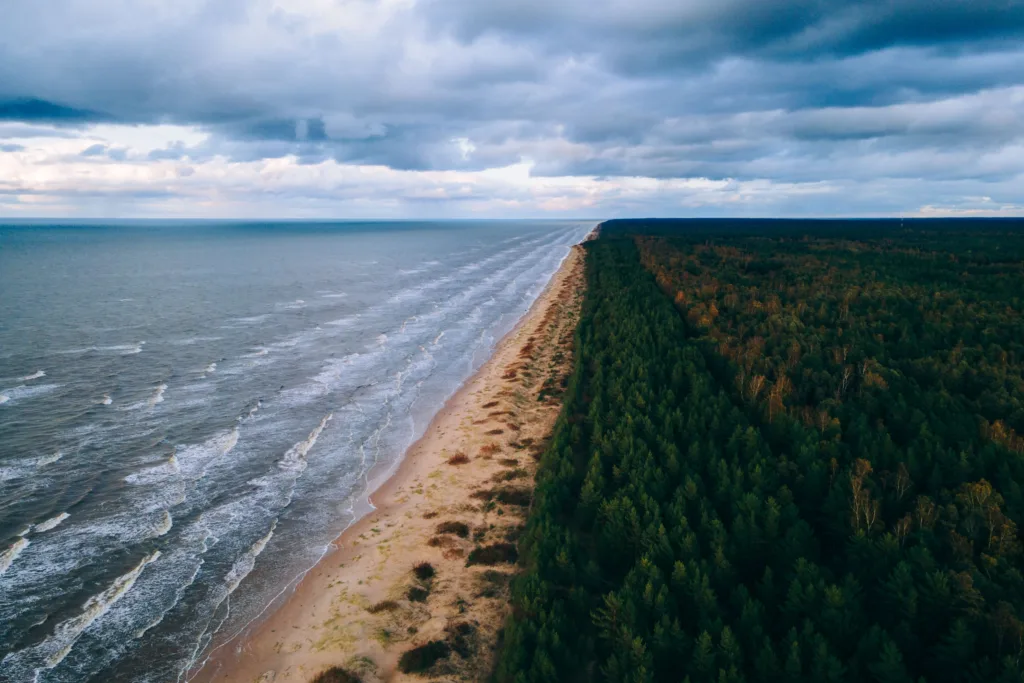
Irbe Strait was always a strategically vital point for access to the Gulf of Riga, making whoever controlled it a power to reckon with.
Long before the echoes of the First World War faded, fortifications stood sentinel on the western shore of Courland. The stage was set for significant developments, and on August 23, 1939, the Molotov-Ribbentrop Pact was inked, casting Latvia into the shadows of Soviet influence.
The pact brought forth a formidable presence – 25 thousand Soviet soldiers stationed in Latvia, armed with the authorization to erect military and coast guard bases. The Livonian Coast, nestled between Lielirbe and Mikeltornis, witnessed the construction of the inaugural coastal artillery base. Its mirror image materialized on the opposite shore, marking the Sore Peninsula of Saaremaa.
Post-Second World War, Latvia found itself under Soviet occupation, and the Livonian Coast morphed into the USSR’s frontier. Time swept over the landscape, bringing fishing restrictions and strict regulations on beach access, with barbed-wire fences punctuating the dunes. As dusk settled, searchlights guarded the coast, a stark reminder of the controlled border.
The establishment of a frontier zone forced many local Livs to abandon their homes, seeking refuge in bustling cities like Ventspils and Riga. Livonian villages along the Irbe Strait stood deserted, a testament to the impact of the geopolitical maneuvers at the time.

Soviet military units claimed these areas for a myriad of purposes – border patrols, air defense, sea monitoring, coastal artillery, and even the enigmatic center of space investigation, Little Star (now known as the Irbene radio telescope).
The military presence birthed adjacent bases and towns, complete with infrastructure to sustain the needs of the armed forces. Yet, in the intricate art of deception, dummy equipment, mimicking missiles, tanks, and vehicles, adorned the landscape to confound potential adversaries and spies.
Amidst the shadows of militarization, a paradoxical scenery unfolded. The Kolka military contingent became intertwined with local life, offering economic support and community policing. Soldiers engaged in cultural activities, fostering ties with the community and collaborating with local schools. Young recruits found camaraderie, and the intertwining destinies of soldiers and local girls painted a complex portrait of life along the Livonian Coast during this complex era.
Slitere National Park

Cape Kolka finds itself within Slitere National Park, a pristine expanse of natural beauty in the northwestern part of Latvia.
Slitere National Park, established in 1999, encompasses a diverse range of landscapes, from coastal areas to dense forests, making it a haven for both biodiversity and outdoor enthusiasts.
As you venture beyond Cape Kolka into the heart of Slitere National Park, you’ll find a tapestry of ecosystems that reflect the park’s commitment to environmental conservation.
The park covers a significant portion of the Livonian Coast, emphasizing the preservation of not just natural landscapes but also the cultural heritage of the Livonian people who have shaped this region for thousands of years.
The Livonian Culture Center, located in Mazirbe, serves as a focal point for initiatives aimed at reviving and celebrating the traditions, language, and folklore of the Livonian people.
One of the key features of Slitere National Park is its ancient forests, home to a variety of flora and fauna. Old-growth forests with towering trees, some centuries old, create a habitat for numerous plant and animal species. The park is also known for its diverse birdlife, making it a birdwatcher’s paradise, especially during migration seasons.
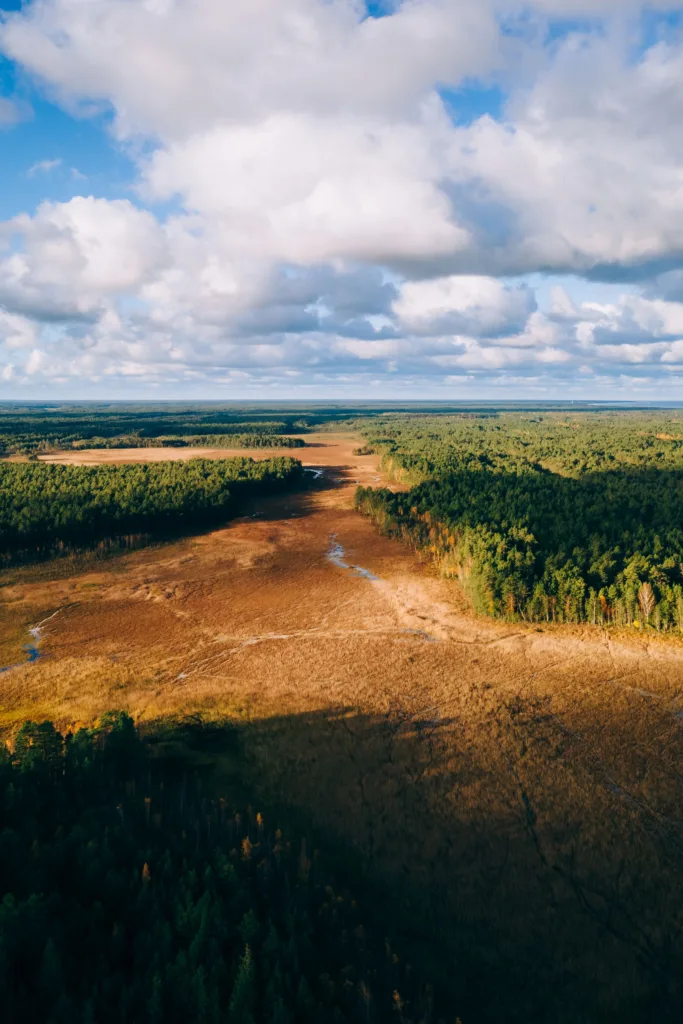
The park’s management prioritizes the protection of these natural habitats, emphasizing sustainable tourism practices to maintain the delicate balance between human activities and environmental conservation.
Trails and pathways crisscross the park, inviting hikers and nature enthusiasts to explore its varied landscapes. Whether wandering through ancient woodlands, meandering along coastal cliffs, or trekking through marshy areas, visitors can immerse themselves in the untamed beauty of Slitere.
The coexistence of cultural heritage and environmental conservation makes Slitere National Park a unique destination. It is not just a protected area but a living testament to Latvia’s commitment to safeguarding its identity. As you explore the trails and landscapes within the park, you’re not just witnessing the beauty of nature; you’re participating in a journey that honors the intricate dance between humanity and the environment.
Who Are the Livs?
In the windswept landscapes surrounding Cape Kolka and within the embrace of Slitere National Park, the essence of Livonian culture weaves seamlessly into the fabric of the region. The Livs, an indigenous Finno-Ugric people, have called the Livonian Coast home for centuries (or millennia, depending on the source), leaving an indelible mark on the cultural identity of this unique corner of Latvia.
History of the Livs
Their history is a tumultuous one, but to understand the condition of Livonian culture today I can simplify it.
The Livonian people had their golden age between the 11th and 13th centuries, when they were spread all throughout the Livonian coast and along the Gauja River valley, to the east of the Gulf of Riga.
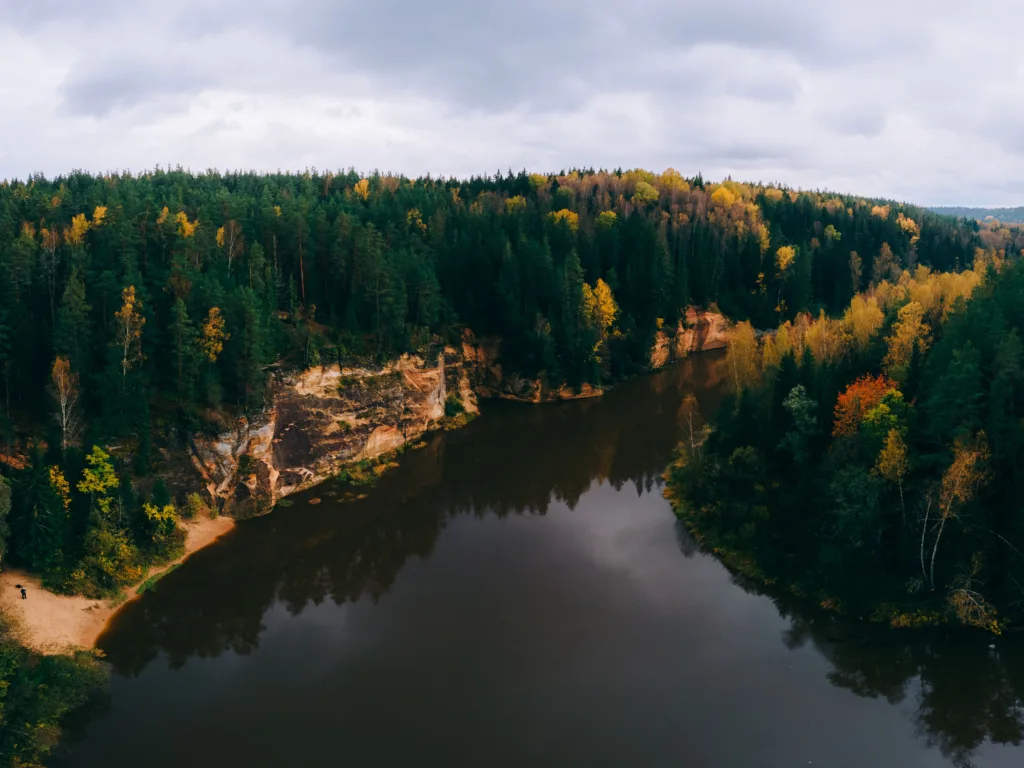
When the Christian Crusaders came to Latvia in the second half of the 13th century, the Livonians were destroyed, marking the start of a low but constant decline of Liv identity and territory.
Latvia as a whole went through several rulings of their territory throughout the centuries, first by the Germans, then by the Polish and Swedish, and again by the Germans in the 19th century. This is when Latvian national identity began to swell up more than ever before, leading to several changes and initiatives within the country.
However, we’d have to wait until the end of World War I, during which Latvia was occupied by the Germans, to see Latvian independence in 1918.
During the 20 years between WWI and WWII, the Livonians stayed in their finally independent Latvia, but now a small minority compared to the last time they were free of occupation.
For several reasons, the Latvian Government didn’t focus many resources on preserving the territory and culture of the then few thousands of Livs remaining, causing a further diminishment in numbers.
The worst blow came in 1939 when the Soviet Union occupied Latvia. If Latvia wasn’t too helpful in preserving the Liv culture, the Soviets actively fought against it with damaging maneuvers, especially on the Livonian coast.
Most villages were abandoned, as the Livs escaped to Riga and Ventspils.
Nowadays, the marks of Soviet occupation are still deep, with only many dozens or a few hundred Livs back on their historical coast.
Their language is only spoken fluently by a few people in the nearby cities.
However, the Liv spirit lives on. Despite being so few, the Livs are a tight community that organizes several events, taking into their own hands the matter of the preservation of their culture.
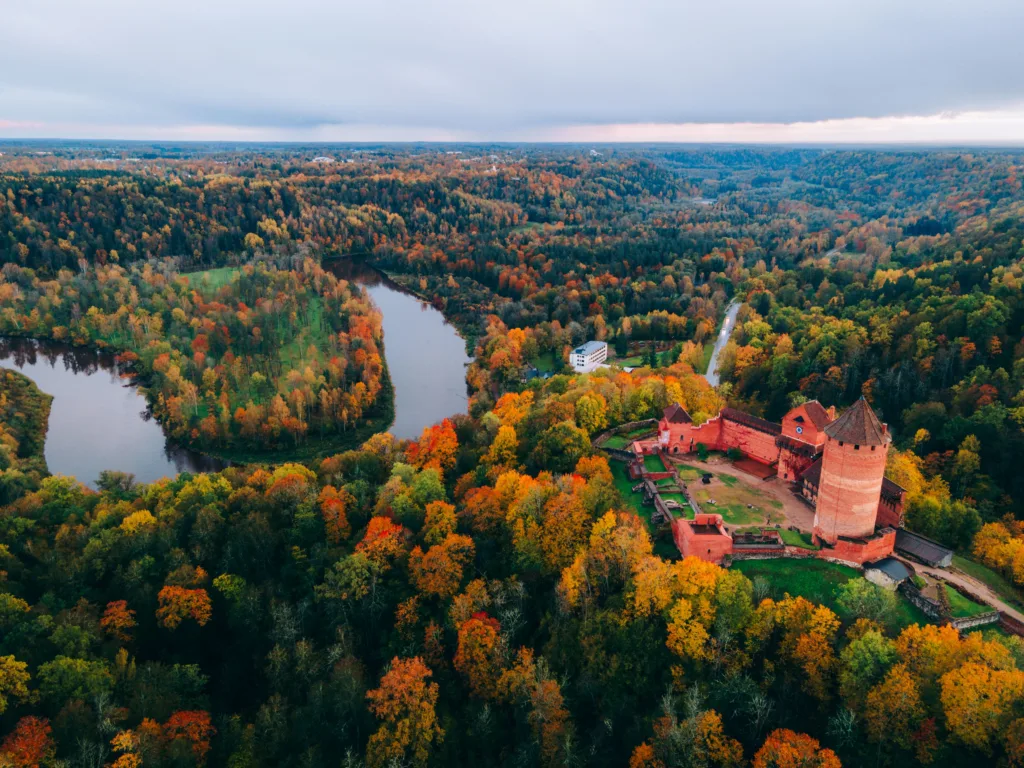
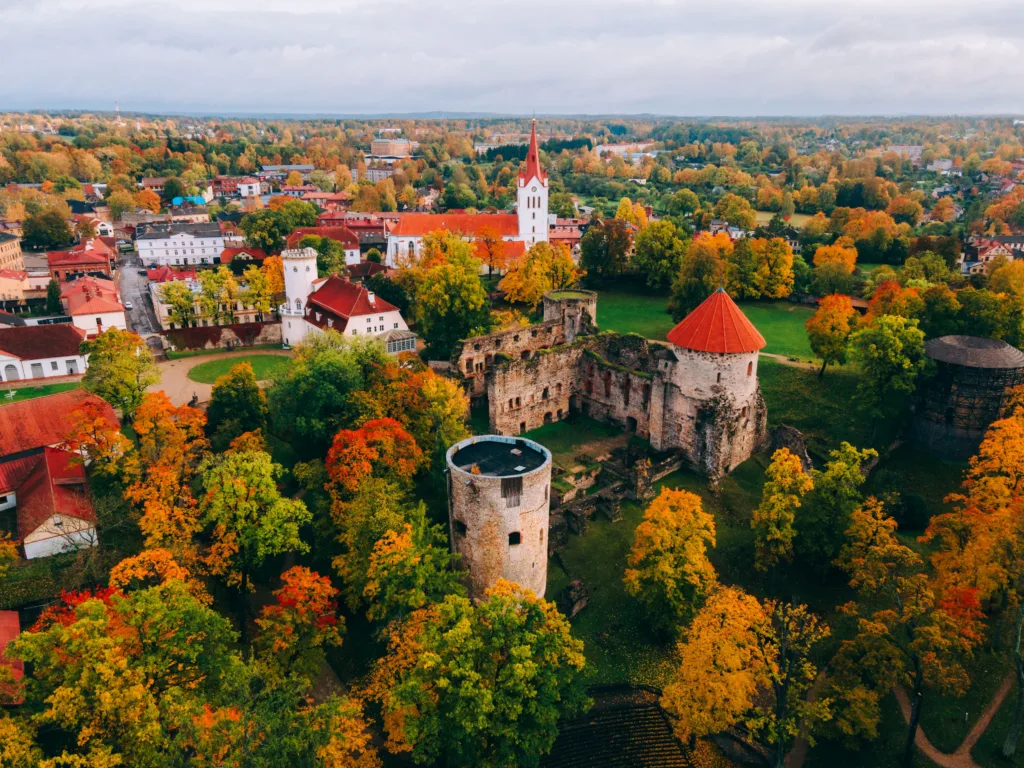
Culture of the Livs
At its core, Livonian culture is a testament to a way of life deeply intertwined with the natural environment. Traditionally, the Livonians were fishermen and farmers, their livelihood intricately linked to the land they inhabited. The Livonian language, with its roots in the Finno-Ugric family, reflects not only a linguistic heritage but a cultural identity that distinguishes the Livs from their surroundings.
In the realm of spirituality, the Livonians believed that each person embarked on a dual existence – one during their tangible life and one after their death. This belief in an afterlife intricately shaped Livonian funeral traditions, with people wearing festive clothes and celebrating the deceased.
The strong connection with nature also found a place in their beliefs, as the natural world took on divine attributes. Sacred trees, springs, stones, caves, and hills held an untouchable and miraculous power, forming a sacred landscape.
Through elaborate rituals, including sacrifices and offerings, the Livs looked for favor from the spirit world, guided by wise men and fortune-tellers.
To attract and pay homage to the protective energies of nature, Livs wore pendants bearing symbols of the sun, moon, and thunder.
The cult of animals manifested in amulets adorned with figures of water birds, horses, oxen, and the widespread use of bear fangs or other animal teeth.
Beyond mere symbolism, these traditions, rituals, and beliefs played a vast role in the fabric of Livonian life and economic processes, establishing a profound order that reflected their deep connection with the natural and spiritual realms.
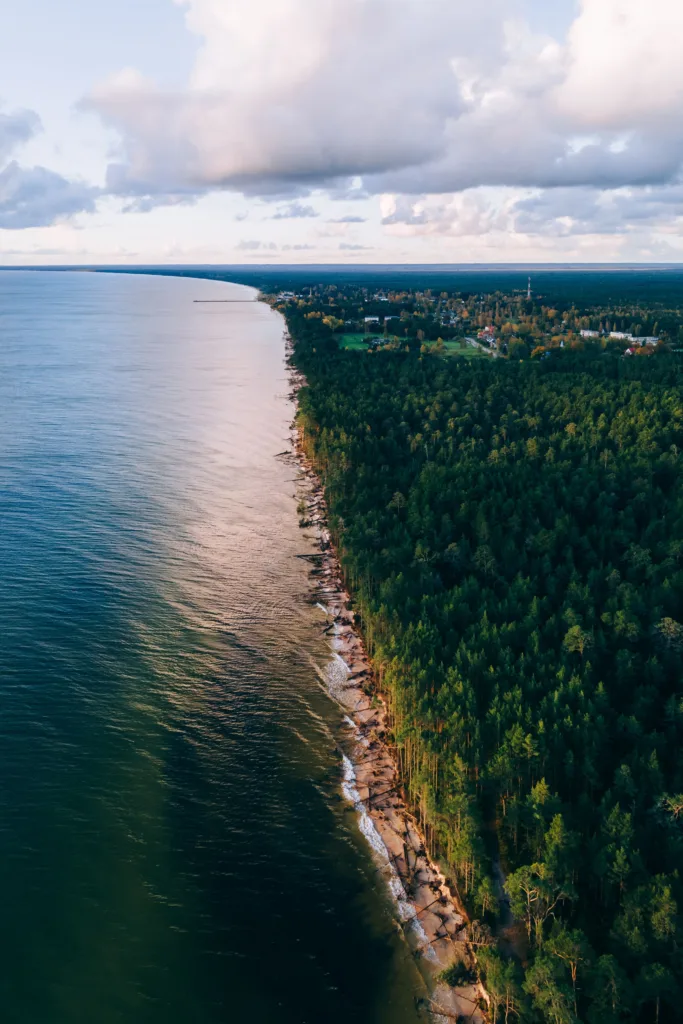
Every year, the Livonian Festival is held in Mazirbe, a celebration that transcends time. Music performances, dance, storytelling, and crafts breathe life into the cultural tapestry of the Livs, inviting both locals and visitors to immerse themselves in this living heritage.
It’s a moment to witness the resilience of Livonian identity against the backdrop of shifting sands and changing tides.
Also in Mazirbe, the Livonian Culture Center stands as a guardian of tradition and a beacon of cultural preservation. Efforts to revitalize the Livonian language, educational programs, and initiatives to sustain Livonian customs converge in this space, fostering a sense of continuity in the face of modern challenges.
To learn more about the Livs you can head to this local website.
As one explores Cape Kolka and Slitere National Park, the echoes of Livonian culture resonate in the rustle of leaves, the crashing of waves, and the vibrant hues of traditional clothes. The Livs, with their language, customs, and spiritual connection to the land and sea, contribute to the rich narrative of Latvia’s past and present, inviting all who visit to become part of the unfolding story of Livonian resilience and cultural vibrancy.